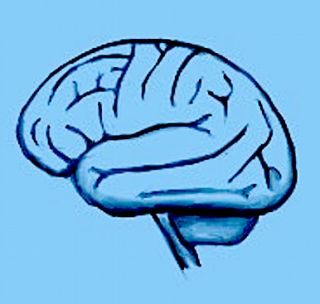Serial Killers
Mindhunting: A Woman’s Touch
A forensic nurse helped FBI profilers standardize behavioral analysis protocol.
Posted March 10, 2024 Reviewed by Kaja Perina
Key points
- The FBI’s early efforts to make profiling a viable tool struggled with reliability.
- Forensic nursing instructor Ann Burgess showed agents how to standardize the method.
- Burgess' work helped to shift attitudes about sex crimes and the value of female colleagues.

There are plenty of books devoted to the history of FBI profiling, but Dr. Ann Wolbert Burgess supplies a detailed rendering of its development from a woman’s point of view. She was there. For a time, she was the only woman there, and sometimes she had to remind her male colleagues to treat her as an equal. She’d already experienced plenty of sexism from male doctors. Due to her research experience, she demonstrated the type of analysis the agents needed to develop a standard, reliable, and teachable protocol. She deserves a place in Women’s History Month.
In 2016, the American Academy of Nursing named Burgess a Living Legend. Her autobiographical book (with writer Steven Constantine), A Killer by Design, is a must-read for anyone interested in how the FBI developed its profiling program. Forget Mindhunter, the Netflix show. Burgess tells the real story.
It was 1978. She worked at Boston College. It was the early days of forensic nursing, and the profession was often ignored. Myths prevailed about rape, so she conducted research on rape survivors with a sociologist. They identified power and domination as driving motives for rape rather than sexual gratification. They also documented the prolonged trauma that rape victims endured and published some eye-opening articles.
FBI Special Agent Roy Hazelwood noticed. He called Burgess from the nascent Behavioral Science Unit (BSU) and invited her to lecture at Quantico. This evolved into having her assist the new unit with their criminal personality program. She showed them how to organize and systemize their data. Burgess worked closely with Roy Hazelwood, Robert Ressler, and John Douglas in what would become a long collaboration toward the goal of confirming the utility of behavioral analysis for law enforcement.
“I wasn’t an agent or a profiler,” Burgess writes. “I’d simply been a quick-fix solution enabling the academy to address a lack of understanding of rising trends in sexual crimes. But chance is a funny thing. I’d spent years being told that my interest in the psychology of victims was ‘taboo’ or ‘dangerous’ or not a place for women to get involved.”
Since the BSU agents were a bit rogue as well, they viewed her as an ally in their mission. “In everything we couldn’t say, we became a team.” Burgess studied the agents as well in her quest to learn “which parts of profiling could be taught, which could be refined through experience, and how could we assess a potential agent’s aptitude for profiling?”
Claiming that profiling is both art and science, Burgess describes in detail how it worked in the John Joubert case from Nebraska in 1983. Two boys had been bound, raped, and killed, as well as bitten in a specific manner. Ressler was able to link them with a signature analysis and provide a profile of the type of person who would do it—and do it again. Joubert was soon caught trying to abduct another boy. He closely fit the profile. Later, when Ressler gave a lecture on the case, an investigator from Maine linked Joubert to a murder there, where Joubert had once resided. This won some notice from the FBI’s administration, although they weren’t particularly supportive of the unit. Little by little, they came to admit there was merit in the method. The BSU got more funding and better offices.
While these agents went on to win renown from books they wrote in retirement, Burgess stayed in the background. Then Netflix aired Mindhunter and she was thrust into the spotlight as Wendy Carr. There are key differences between Burgess and Carr, notably that she was in forensic nursing (not psychology), was a wife and mother (not a lesbian), and she worked primarily in Boston. Still, she got deeply involved in the research on serial killers, learning enough to establish many predictable traits and behaviors.
When she encountered anomalies like Edmund Kemper and Monte Rissell, she devoted her time to solving the puzzles they presented. Burgess respected the complexities of individual offenders, resisting the media presentations of them as one-dimensional monsters who all think alike.
“What’s fascinating about the criminal mind,” she writes, “is how simultaneously foreign it is while being so disturbingly close to our own.”
Burgess' ultimate purpose in learning about killers was on behalf of victims. “They are the reason I persist… This story is as much theirs as it is mine.”
She's currently a member of the Cold Case Foundation. With psychiatric nursing colleagues from Johns Hopkins University and the University of Maryland, Burgess participates in the “Super Sleuth Club,” meeting regularly to work on unsolved cases that need attention. Her long career on behalf of others is impressive.
References
Burgess, A. W., & Constantine, S. M. (2021). A killer by design: Murderers, mindhunters, and my quest to decipher the criminal mind. Hachete Books.




